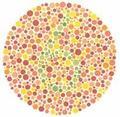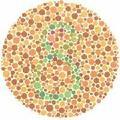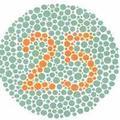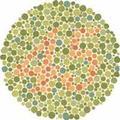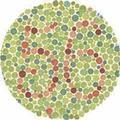|
Color Blindness Charts Information
There are a lot of different color blindness charts, but the most famous and most common would have to be the Ishihara color blindness test , which consists of a series of dots in a circle that have nearly the exact same hue. In the center of the circle is a series of different colored dots that form a number. By using this test, you'll be able to determine whether or not you have a color blindness deficiency. The way color blindness charts work is by putting similar or commonly deficient colors together and then asking you to tell the difference between the two hues. To any person with normal color vision, this is the easiest test in the world. All it is a circle with a number inside. To a person with anywhere from a mild to severe color vision deficiency though, the test is either possible or completely impossible. An example of the Ishihara test would be a circle that is composed primarily of green dots. In the center of this circle, the letter 6 is written with red dots. Someone with Red Green Color Blindness , the most common form of Color Blindness, wouldn't be able to tell the difference between these two shades, so in effect all they would see is a circle with a single hue all the way through.
This offers incredible insight into the way the mind works, and there are plenty of different color blindness charts that do the exact same thing. In the Ishihara test, there are actually thirty-eight different plates, each of which has different color combinations on it. Some of them only have two colors, one for the background and one for the number, and some of them mix in five or even 6 different hues, making it possible to test for even the slightest color vision deficiency. In fact, a lot of people actually have very slight deficiencies in the way they process color. There are an estimated 8 percent of males that currently have it, but in reality that number could be a good deal larger. Not every parent recognizes Color Blindness in their children, and as those children grow up they never think to question whether or not they are colorblind. Unless there's a glaring difference in the way they see as opposed to the way other people see, which would be spotted in childhood anyway, they wouldn't have any reason to suspect that there was anything unusual about them. That's why the actual number of people who are colorblind could even be as high as 20 percent of the male population, maybe even higher. In women, the number is fairly certain since most females cannot become color blind anyway. Since the gene is located in the male chromosome, it tends to only become dominant in males. Either way, if you use online color blindness charts and suspect that you may be partially color blind, consult your Eye Care Professional or
Eye Care Specialist to get a more professional diagnosis.

Subscribe to EyeSight Vision Care! , our monthly newsletter with in depth information to help you keep up to date on how to Protect Your Eyesight with a free bonus. Fill out the form below. You'll then receive an email asking you to confirm that you subscribed. You'll always have the option to unsubscribe at the click of your mouse. Color Blindness Charts to Color Blindness Test Charts
|
More Information







